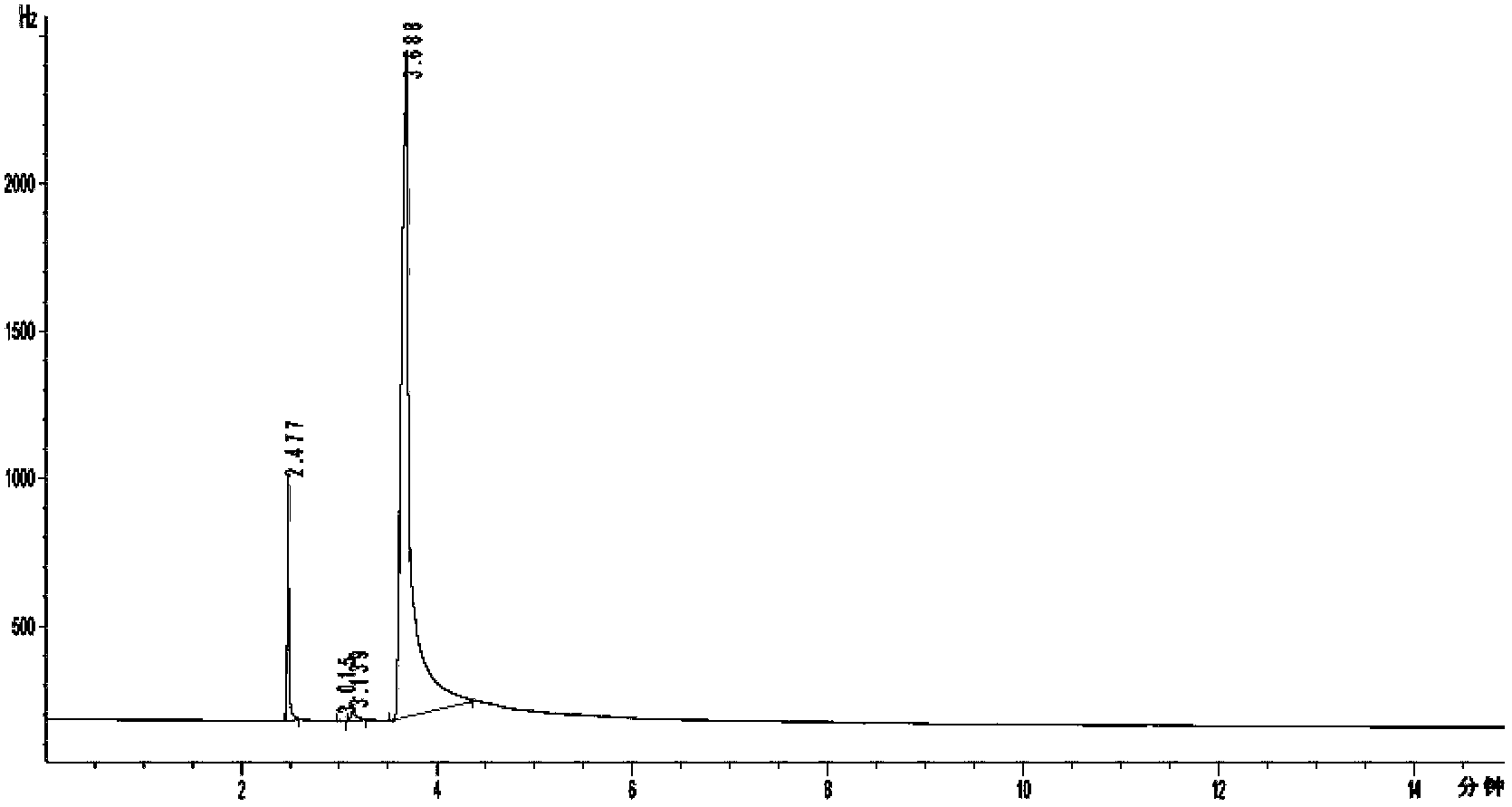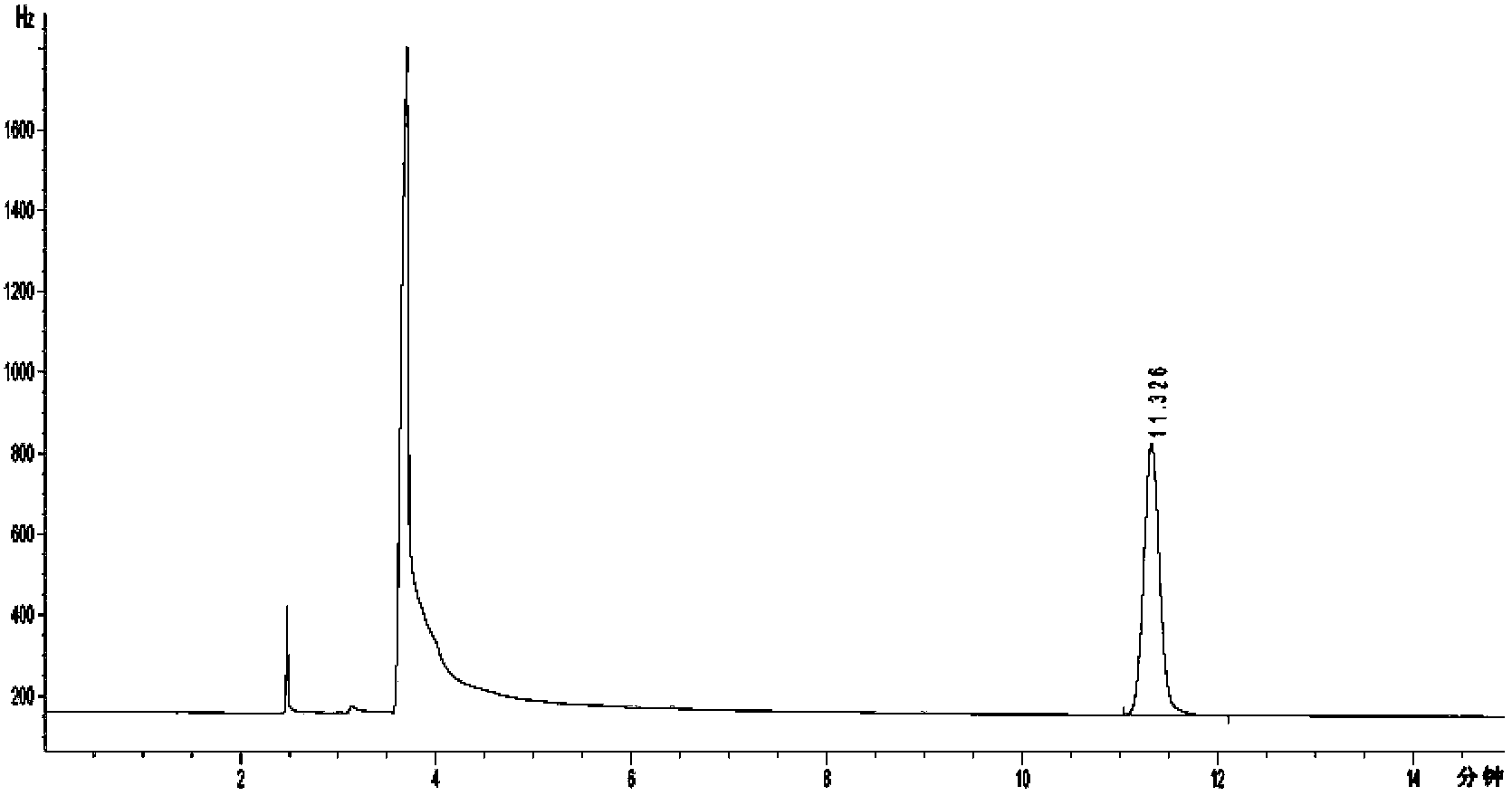Separation analysis method of residual amount of chloroform in meclizine dihydrochloride
A technology for the separation and analysis of meclizine hydrochloride, which is applied in the direction of material separation, analysis materials, and measuring devices, can solve the problems of low chloroform response value and inability to accurately measure chloroform residues, and achieve high sensitivity, easy operation, and responsiveness. high value effect
- Summary
- Abstract
- Description
- Claims
- Application Information
AI Technical Summary
Problems solved by technology
Method used
Image
Examples
experiment example 1
[0104] Experiment name: Optimization of chromatographic conditions for the determination of chloroform residues in meclizine hydrochloride
[0105] Purpose of the experiment: Determination of chloroform residues in meclizine hydrochloride, optimization of column temperature conditions
[0106] Experimental method: Agilent 7820A gas chromatograph, Agilent 7694E headspace sampler. A capillary column (30m×0.53mm×3.0μm) using (6%) cyanopropylbenzene-(94%) dimethyl polysiloxane copolymer as the stationary phase, an electron capture detector (ECD), and a detector The temperature is 300°C, the temperature of the injection port is 250°C, the carrier gas is nitrogen, and the flow rate of the carrier gas is 3ml per minute;
[0107] Chromatographic column temperature: use 100°C, 80°C, 60°C, 45°C respectively, and maintain for 6-15 minutes;
[0108] Last run at 200°C, maintain for 5 minutes; or do not set the last run program;
[0109] Headspace equilibration time 10, 15, 30, 60 minute...
experiment example 2
[0122] Experiment name: Method validation for chloroform residues in meclizine hydrochloride—linearity test
[0123] The purpose of the experiment: to verify the linear range of the method for the residual amount of chloroform in meclizine hydrochloride through a linear test
[0124] Experimental method: Agilent 7820A gas chromatograph, Agilent 7694E headspace sampler. A capillary column (30m×0.53mm×3.0μm) using (6%) cyanopropylbenzene-(94%) dimethyl polysiloxane copolymer as the stationary phase, an electron capture detector (ECD), and a detector Temperature 300°C, inlet temperature 250°C, carrier gas nitrogen, carrier gas flow rate 3ml per minute; column temperature: 45°C for 15 minutes, then run at 200°C for 5 minutes; headspace equilibration time 30 minutes.
[0125] Take about 16.5mg of chloroform, accurately weigh it, put it in a 25ml measuring bottle, dilute to the mark with methanol, shake well, and use it as a concentrated solution. Accurately measure appropriate am...
experiment example 3
[0131] Experiment Name: Method Validation for Chloroform Residues in Meclizine Hydrochloride—Lowest Limit of Detection and Limit of Quantification
[0132] Experimental purpose: To verify the sensitivity of the method for chloroform residues in meclizine hydrochloride through the lowest detection limit and the lowest quantification limit.
[0133] Experimental method: Agilent 7820A gas chromatograph, Agilent 7694E headspace sampler. A capillary column (30m×0.53mm×3.0μm) using (6%) cyanopropylbenzene-(94%) dimethyl polysiloxane copolymer as the stationary phase, an electron capture detector (ECD), and a detector Temperature 300°C, inlet temperature 250°C, carrier gas nitrogen, carrier gas flow rate 3ml per minute; column temperature: 45°C for 15 minutes, then run at 200°C for 5 minutes; headspace equilibration time 30 minutes.
[0134] Take the 0.66μg / ml solution in the chloroform linearity test, dilute it step by step with methanol, and determine the lowest detection limit an...
PUM
 Login to View More
Login to View More Abstract
Description
Claims
Application Information
 Login to View More
Login to View More - R&D
- Intellectual Property
- Life Sciences
- Materials
- Tech Scout
- Unparalleled Data Quality
- Higher Quality Content
- 60% Fewer Hallucinations
Browse by: Latest US Patents, China's latest patents, Technical Efficacy Thesaurus, Application Domain, Technology Topic, Popular Technical Reports.
© 2025 PatSnap. All rights reserved.Legal|Privacy policy|Modern Slavery Act Transparency Statement|Sitemap|About US| Contact US: help@patsnap.com



